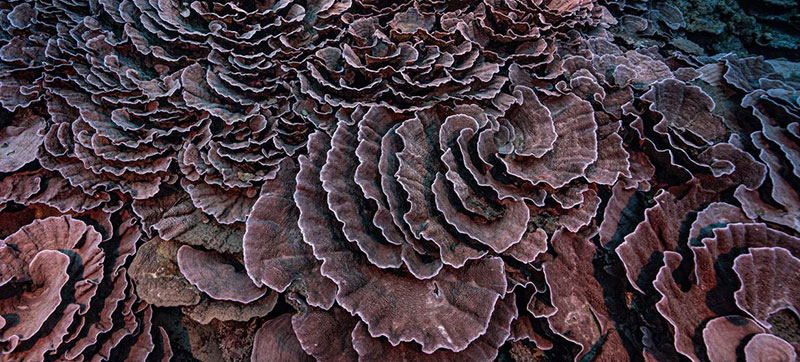 Coral Reef
Coral Reef
Rare coral reef discovered near Tahiti is ‘like a work of art’, says diver
New York: One of the largest coral reefs in the world has been discovered by a UN-supported scientific mission off the coast of Tahiti. Announcing the stunning find on Thursday, UNESCO said that divers had explored large rose-shaped corals spanning some three kilometres, at depths of between 30 and 65 metres.
Early indications suggest that its depth has protected it from bleaching caused by global warming.
“It was magical to witness giant, beautiful rose corals which stretch for as far as the eye can see. It was like a work of art,” said Alexis Rosenfeld, French photographer and founder of the #1Ocean campaign, who led the diving mission.
Buried treasure
The reef find is highly unusual because of its deep location, as the vast majority of the world’s known coral reefs only descend to around 25 metres.
The rose-like corals measure up to two metres in diameter and the reef itself is between 30 metres and 65 metres wide.
“This discovery suggests that there are many more large reefs out there, at depths of more than 30 metres, in what is known as the ocean’s ‘twilight zone’, which we simply do not know about,” said UNESCO, the UN scientific, educational and cultural organisation.
Hailing the “incredible work” of scientists who suspected that there might be a spectacular coral reef off the coast of Tahiti, UNESCO Director General Audrey Azoulay noted that only 20 per cent of the entire seabed has been mapped.
“We know the surface of the moon better than the deep ocean,” she said. “This remarkable discovery in Tahiti demonstrates the incredible work of scientists who, with the support of UNESCO, further the extent of our knowledge about what lies beneath.”
Leap into the deep
The expedition which made the discovery was part of UNESCO’s ocean mapping initiative.
Finding coral reefs of this size is significant because they are an important food source for other organisms and as such can aid research around biodiversity.
Organisms that live on reefs can also be important for medicinal research, while from the point of view of sustainability, reefs can provide protection from coastal erosion and even tsunamis.
“French Polynesia suffered a significant bleaching event back in 2019, however this reef does not appear to have been significantly affected,” said Dr. Laetitia Hedouin from France’s National Centre of Scientific Research (CNRS) and the environmental research body CRIOBE, who was present on the mission.
‘Pristine condition’
“The discovery of this reef in such a pristine condition is good news and can inspire future conservation. We think that deeper reefs may be better protected from global warming.”
Until now very few scientists have been able to locate, investigate and study coral reefs at depths of more than 30 metres. However, advances in technology have meant that longer dives at these depths are now possible.
In total the team carried out dives totalling around 200 hours to study the reef, and were able to witness the coral spawning. Further dives are planned in the coming months to continue investigations around the reef.
Action for the ocean
UNESCO is the UN agency in charge of ocean research. Its Intergovernmental Oceanographic Commission, founded in 1960, which involves 150 countries, coordinates global programmes such as ocean mapping and a tsunami alert system, along with numerous scientific research projects.
The agency is also the guardian of unique ocean places, through 232 marine biosphere reserves and 50 marine World Heritage sites of Outstanding Universal Value.
UNESCO leads the United Nations Decade of Ocean Science for Sustainable Development, from 2021 to 2030, which this year involves several major international summits to amplify international cooperation and action.
Support Our Journalism
We cannot do without you.. your contribution supports unbiased journalism
IBNS is not driven by any ism- not wokeism, not racism, not skewed secularism, not hyper right-wing or left liberal ideals, nor by any hardline religious beliefs or hyper nationalism. We want to serve you good old objective news, as they are. We do not judge or preach. We let people decide for themselves. We only try to present factual and well-sourced news.






